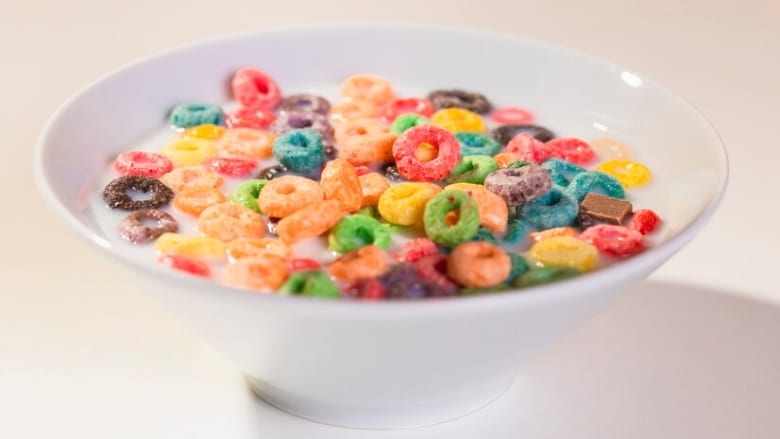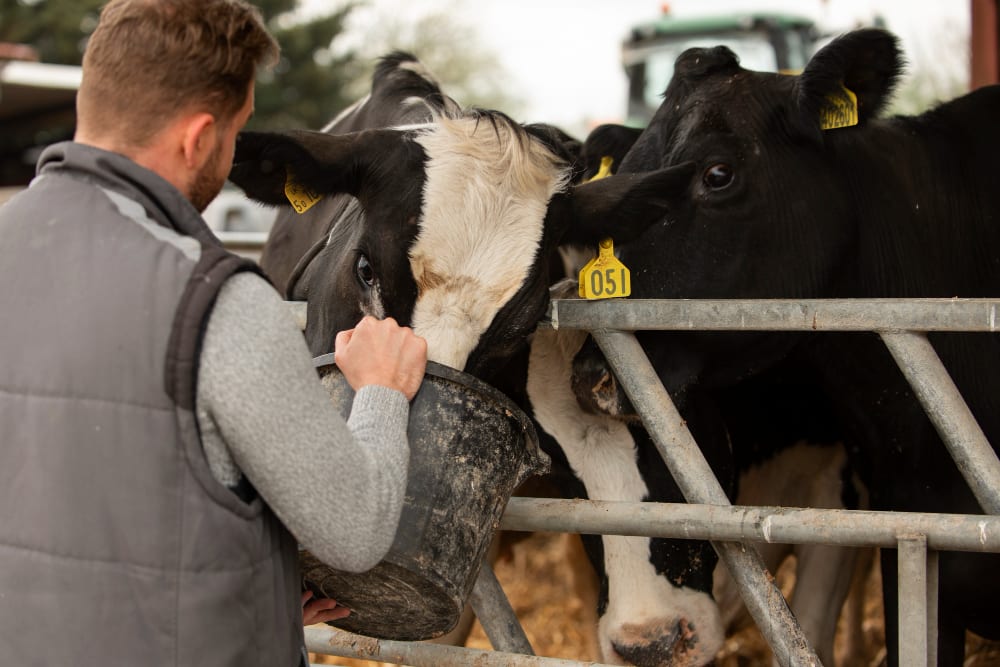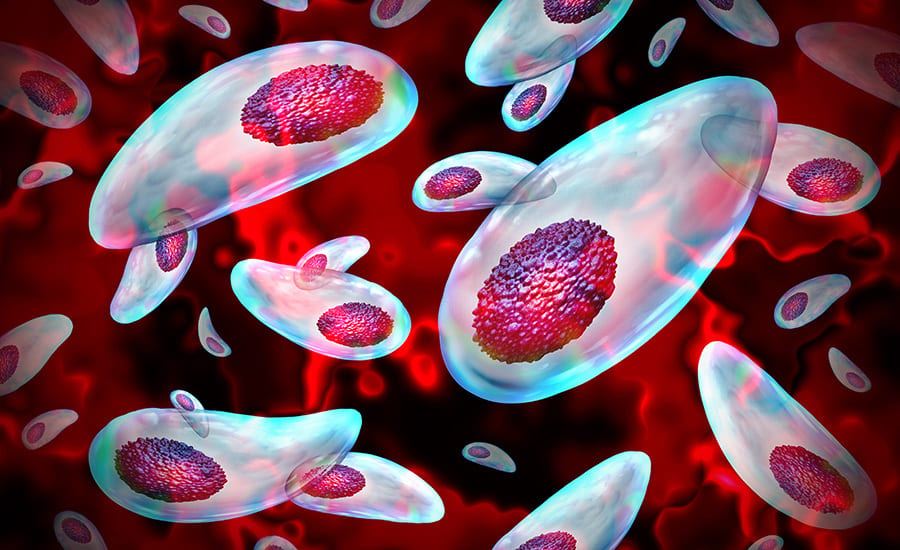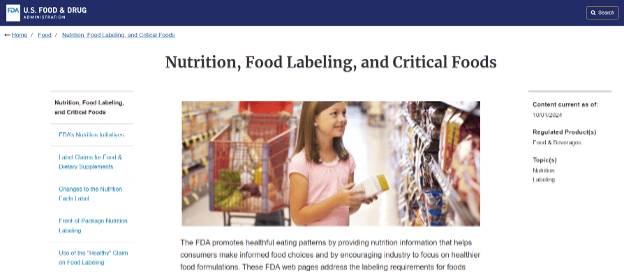
SCROLL
DOWN
The Trump administration released its "Make America Healthy Again" (MAHA) Report on May 22, laying a foundation for the overhaul of government policy on childhood nutrition, food chemicals and additives, environmental toxins found in food contact materials, vaccines, pharmaceutical usage, and technology habits of children and teens. President Trump previously issued an Executive Order on February 13 establishing the MAHA Commission and promising the delivery of a comprehensive "Make Our Children Healthy Again Assessment" within 100 days.
Food, Nutrition, and Public Health
Regarding food safety, nutrition, and public health, the report dedicates an entire section to the diet ramifications of consumption of ultra-processed foods, as well as the link between these foods and childhood chronic disease. The report notes that rising rates of childhood chronic disease "are likely being driven by a combination of factors," and affirms that "most American children's diets are dominated by ultra-processed foods (UPFs) high in added sugars, chemical additives, and saturated fats, while lacking sufficient intakes of fruits and vegetables. This modern diet has been linked to a range of chronic diseases, including obesity, type 2 diabetes, cardiovascular disease, and certain cancers."
The report defines UPFs as "industrially manufactured food products that undergo multiple physical and chemical processing steps and contain ingredients not commonly found in home kitchens," including "packaged and ready-to-consume products that are formulated for shelf life and/or palatability but are typically high in added sugars, refined grains, unhealthy fats, and sodium and low in fiber and essential nutrients." According to the report, nearly 70 percent of an American child's daily caloric intake comes from UPFs. "The American food system is safe but could be healthier," the report states.
Food Chemicals and Additives
The report also takes a swipe at food chemicals and additives, such as synthetic dyes. It notes that "over 2,500 food additives—including emulsifiers, binders, sweeteners, colorings, and preservatives—may be used to mimic the taste and texture of conventional food and increase its shelf life," and that studies have established links between these chemicals and increased risk of mental disorders, ADHD, cardiovascular disease, metabolic effects, and cancer.
The report calls out specific food chemicals for having potentially harmful effects on health, including:
- Food colorings like red dye 40, which the report links to behavioral issues in children such as ADHD and autism.
- Titanium dioxide, a white food coloring that the report says may cause cellular and DNA damage.
- Propylparaben, a preservative that may cause hormone imbalances.
- Butylated hydroxytoluene (BHT), a preservative that has been found to cause tumor growth in rodent studies.
- Artificial sweeteners, such as aspartame, sucralose, and saccharin, which have been found to interfere with the gut microbiome in rodent studies. Additionally, aspartame has been classified as "possibly carcinogenic" according to the International Agency for Research on Cancer (IARC).
The report also notes that, "In recent years, some American parents have turned to European [infant] formula brands, driven by supply concerns and questions regarding the number and types of additives found in U.S. [infant] formulas."
The solution to the childhood nutrition and diet crisis, according to the report, is to "put whole foods produced by American farmers and ranchers at the center of healthcare," since "Research… consistently links diets centered on whole foods to lower rates of obesity, type 2 diabetes, heart disease, certain cancers, and mental illness."
The report also cites the distortion of nutrition research and marketing by the food industry as a causative factor in the diet crisis. "The public depends on scientific research and the media for information about the food we consume. The food industry has increasingly influenced these critical sources of public information, diminishing the integrity of information available to consumers," it notes.
Additionally, the report blasts the Dietary Guidelines for Americans (DGA) for its overly complex and technical language that may be difficult for the average American to understand; for not explicitly addressing UPFs or considering how foods are produced or processed; and for being influenced by corporate interests.
Environmental Chemical Exposure
Regarding environmental chemicals in food contact materials, the report addresses the potential health harms of PFAS and microplastics in food packaging, cookware, and other consumer products; phthalates and bisphenols in food packaging and other products; added fluoride in drinking water; and pesticides, herbicides, and other crop protection chemicals.
The report notes that more than 40,000 chemicals are registered for use in the U.S. and that "pesticides, microplastics, and dioxins are commonly found in the blood and urine of American children and pregnant women—some at alarming levels." Long-term, cumulative exposure to these chemicals through food, water, and air can pose health risks to children, including neurodevelopmental and endocrine issues, the report states.
"The Executive Order establishing the MAHA Commission directed the involved agencies to work with farmers to ensure that United States food is the healthiest, most abundant, and most affordable in the world," the report notes. It also acknowledges that "American farmers rely on [pesticides and other crop protection chemicals], and actions that further regulate or restrict crop protection tools beyond risk-based and scientific processes set forth by Congress must involve thoughtful consideration of what is necessary for adequate protection, alternatives, and cost of production."
Actions and Additional Insights
The MAHA Commission plans to immediately begin work on the development of strategy to "make our children healthy again," and aims to publish this strategy in August 2025.
Other immediate actions established by the report, with regard to the food supply, include:
- Oversight of the reform of the GRAS (Generally Recognized as Safe) provision for food chemicals and additives
- The development of long-term nutrition trials, to be funded by the National Institutes of Health (NIH), to compare whole-food, reduced-carbohydrate, and low-UPF diets in children to determine the effects on childhood obesity and insulin resistance
- The development of large-scale lifestyle interventions, including for childhood diet and nutrition
- The launch of a precision toxicology initiative to map gene-environmental interactions affecting childhood disease risk, including for endocrine-disrupting chemicals.

MAHA Report Sets Stage for Overhaul of Food Chemicals, Environmental Contaminants, and Childhood Nutrition
Nestlé USA, Others to Eliminate Use of Synthetic Food Colorings
Image credit: Dr_Microbe/iStock / Getty Images Plus via Getty Images

Nestlé USA on June 25 shared its timeline to fully eliminate Food, Drug & Cosmetic Act (FD&C Act) colors in its U.S. food and beverage portfolio by mid-2026.
"Over the last decade, the company has been actively removing synthetic colors from its products and working to identify alternative solutions in recipes where they are still used. The work is scheduled to be completed within the next 12 months," the company said in a statement. Nestlé USA notes that over 90 percent of its current portfolio does not include synthetic colors.
The Nestlé USA announcement is not unique. Major brands have issued similar announcements over the past months in response to pressure from the "Make America Healthy Again" (MAHA) Commission, led by Health and Human Services Secretary Robert Kennedy Jr., to remove synthetic colorings from their food products.
For example, Conagra plans to remove synthetic food colorings from its frozen food products by the end of 2025 and from its K-12 school foods by the beginning of the 2026–2027 school year. Similarly, General Mills has announced plans to remove synthetic colors from all of its U.S. cereals and all K-12 school foods by summer 2026. Additionally, the company will work to remove synthetic colors from its full U.S. retail portfolio by the end of 2027. The General Mills announcement came on the same day that The Kraft Heinz Company announced it will not launch any new products in the U.S. with FD&C colors, effective immediately.
Companies such as Tyson Foods and Mars have announced similar moves as the Trump Administration prioritizes phasing out synthetic dyes from the U.S. food supply and scrutinizes food additives generally. HHS and the U.S. Food and Drug Administration (FDA) held a press conference in April announcing their intent to phase out the use of petroleum-based synthetic dyes from the nation's food supply. The agencies described the action as a "major step forward" in the MAHA agenda.
In related news, FDA announced in May the approval of three new food colorings from "natural sources." The new color additives will expand the palette of available colors from natural sources for manufacturers to use in food.
The U.S. Department of Agriculture's Food Safety and Inspection Service (USDA-FSIS) released a notice on June 23 that it plans to extend its H5N1 Influenza A Dairy Cow Testing Program until September 30, 2025. The notice provides information and instructions to veterinarians and consumer safety inspectors regarding the testing of dairy cattle for H5N1 avian flu under the National Residue Program (NRP).
USDA-FSIS implemented its H5N1 monitoring program of dairy cow carcasses on September 16, 2024. The initiative aims to provide continued assurances on the safety of the beef supply and information on the presence of the virus in asymptomatic dairy cows. Previous testing under the H5N1 Influenza A Dairy Cow Testing Program has found traces of H5N1 in muscle from culled, symptomatic dairy cows.
The testing program will examine approximately 800 muscle tissue samples from asymptomatic dairy cows and test them for H5N1. Carcasses that test positive for H5N1 will not be released into commerce and will be saved for research purposes. USDA's Animal and Plant Health Inspection Service (APHIS) may also conduct additional traceback activities to gather epidemiological data and prevent the spread of H5N1.
Federal Milk Testing Programs
USDA-FSIS also began testing milk samples for H5N1 in December 2024 under its National Milk Testing Strategy (NMTS) with the issuance of a Federal Order and accompanying guidance requiring that raw milk samples nationwide be collected and shared with USDA for testing.
Separately, FDA conducted its own milk testing program, which tentatively concluded that avian flu does not pose a food safety risk in pasteurized dairy products. However, traces of H5N1 have been found in raw milk and raw dairy products, and FDA considers these products to pose a food safety hazard. The National Environmental Health Association has also reinforced the hazards of raw milk consumption.
The FDA's milk testing program was suspended in late April amid massive workforce reductions at the Department of Health and Human Services instigated by the Trump administration.
European Commission Releases New Guidance on Avian Flu Prevention
The European Commission (EC) continues to monitor the spread of H5N1 in U.S. dairy cattle. It released a new guidance document on June 24 describing prevention, preparedness, and response for zoonotic avian flu in animals other than birds, as well as practical actions that can be taken to prepare for and respond to avian flu detection in EU mammals or food. The guidance reinforces the EU's robust animal health framework already in place under its One Health framework.
The document notes, "Even if the EU is not currently affected by this virus genotype [B3.13, affecting dairy cattle in the U.S.], some other circulating strains in the EU have proven capacity to infect other mammal species and there are already measures in place to mitigate risks posed by HPAI in the EU, it is prudent to consider various potential options of action in animals, notably in dairy cows, ahead of a potential introduction of this virus."
With regard to food safety, the guidance specifies that preparedness and initial prevention actions will be triggered in the case of "indication of new, riskier, transmission pathways of this virus among animals, beyond the movement of lactating cows," "indication of new, riskier, transmission pathways of this virus to humans, such as wide food-related transmission," or "indications that there is human-to-human transmission."
The document also notes that "…support from EFSA [the European Food Safety Authority] has been already requested to analyze the situation in the U.S. and obtain scientific advice assessing animal health and veterinary public health, including food safety, risks linked with this particular HPAI strain, addressing in particular its likely evolution, its likelihood of spread to the EU or Europe in particular with the migratory wild birds and if likely, the estimated expected time for this spread, its potential impact on the EU and possible risk mitigation measures," including emergency measures addressing the import of high-risk products (including food) and animals into the EU.
The full guidance document can be read here.

USDA Extends H5N1 Testing in Dairy Cattle; EU Releases Guidance on Avian Flu Prevention
FDA is launching "a stronger, more systematic review process" for food chemicals already on the market—especially those that concern consumers most.
Under the leadership of Secretary Kennedy and FDA Commissioner Martin A. Makary, FDA plans to roll out several key actions over the coming months, including:
- A modernized, evidence-based prioritization scheme for reviewing existing chemicals. A draft will be released for public comment soon.
- A final, systematic post-market review process shaped by stakeholder input.
- An updated list of chemicals under review, including BHT, BHA, and ADA. FDA will also take steps to expedite its review of chemicals currently under review like phthalates, propylparaben, and titanium dioxide. FDA will continue to share information about the status of this work on its public website as part of the agency's push for greater transparency.
Historically, FDA has conducted post-market reviews on a case-by-case basis, often in response to citizen petitions or new scientific evidence. "This new framework will be proactive, science-based, and built for long-term impact. Americans are demanding more transparency and accountability around food safety and the FDA is doing just that," HHS said in a statement.
"We are prioritizing our resources and leveraging gold standard science to create, for the first time, a systematic post-market review program that consumers can trust and rely on," said FDA Commissioner Makary. "Only by improving the safety and transparency of the food supply and ensuring consumers can make healthful food choices will we overcome the long-standing trajectory of chronic diseases."

FDA Announces 'Proactive' Post-Market Chemical Review Program
The Food and Agriculture Organization of the United Nations (FAO) recently released an executive summary of the conclusions from its expert meeting in late May 2025 on the microbiological risk assessment of protozoan parasites in foods.
The meeting brought together leading scientists to review global data on foodborne protozoan parasites including Cryptosporidium, Cyclospora cayetanensis, Entamoeba histolytica, Giardia, Toxoplasma gondii, and Trypanosoma cruzi. The expert committee focused on new knowledge and global changes in the data on significant protozoan parasites, with emphasis on work published in the last decade.
The executive summary includes hazard identification and characterization, exposure assessment, and treatment and control strategies for the above-named parasites. It also details global risk characterizations for protozoan parasite-food commodity combinations:
- For Africa, medium risk was identified for Cryptosporidium, Cyclospora, Giardia, Entamoeba, and Toxoplasma in fresh fruits and vegetables
- Asia-Pacific has a high risk of Cyclospora in fresh fruits and vegetables and medium risks of Giardia, Entamoeba, Cryptosporidium, and Toxoplasma in fresh fruits and vegetables and Toxoplasma in game meat
- Europe has a high risk of Toxoplasma in beef and game meat and medium risks of Toxoplasma in pork, fresh fruits, and vegetables and Cryptosporidium in fresh fruits and vegetables
- North America has a high risk of Toxoplasma in game meat and a medium risk of Cyclospora in fresh fruits and vegetables
- Latin America has a high risk of Toxoplasma in beef, pork, and game meat and a medium risk of Cryptosporidium, Cyclospora, Entamoeba, Giardia, and Toxoplasma in fresh fruits and vegetables.
The expert committee also identified several knowledge gaps and needs assessments for foodborne transmission of protozoan parasites, including:
- Increased awareness of foodborne protozoan parasite infections, through coordinated education initiatives for veterinary and medical professionals, national authorities, and members of the food industry
- A commitment by national authorities and regulatory bodies to consistent and transparent reporting of cases and outbreaks caused by protozoan parasites
- Investment in building laboratory capacity by providing regular, standardized training for food testing and public health laboratory staff on the detection and diagnosis of foodborne parasites
- Development of specific action plans for reduction of protozoal infections in livestock
- Development and validation of sensitive, standardized, low-cost, and practical methods for parasite testing in foods and other environmental samples
- Development of molecular methods for effective source tracking (genotyping) in foods and the means to correlate data with detection in humans
- Development of laboratory assays to determine the infectivity status of protozoa detected in foods
- Improved sanitation, hygiene, and education to enhance and protect consumer health and well-being and to reduce the adverse impact of foodborne protozoan parasites, including safe water use.
A full technical report will be published by the FAO in the near future. The full executive summary can be found here.

FAO Releases Summary of Expert Meeting on Parasites Risk Assessment for Foods
Shiga toxin-producing Escherichia coli (STEC) and Listeria infections in the European Union/European Economic Area (EU/EEA) reached their highest levels in 2023 since the start of EU-wide surveillance in 2007, according to the latest annual epidemiological reports issued in June by the European Center for Disease Prevention and Control (ECDC).
Significant Increase in STEC Cases
In 2023, a total of 10,901 confirmed cases of STEC infection were reported across 30 EU/EEA countries, marking a 22 percent increase compared to 2022 and the highest annual notification rate (3.2 per 100,000 population) recorded to date. "The rise in reported cases can partly be attributed to laboratory diagnostic tests that are more sensitive than traditional testing methods and which allow for broader testing beyond specific patient groups or symptom types," ECDC noted.
STEC infection is primarily transmitted through contaminated food, water, or direct contact with infected people or animals. It can cause severe gastroenteritis, enterocolitis, and bloody diarrhea, and in some cases leads to hemolytic-uremic syndrome (HUS), a serious condition causing progressive kidney failure. Children under the age of five are the most affected group.
Record-High Listeriosis Cases
A total of 2,993 confirmed listeriosis cases with 340 deaths were reported in 2023, making it the highest annual number recorded to date. Listeriosis primarily affects elderly individuals, pregnant women, newborns, and people with weakened immune systems. The disease is associated with severe complications, including meningitis, brain infections, and life-threatening bloodstream infections, making it one of the most serious foodborne illnesses under EU surveillance.
"The increasing elderly population, along with changing dietary habits such as higher consumption of ready-to-eat foods, may be contributing to the upward trend," ECDC noted.
Rising Trends in Disease Severity for STEC and Listeriosis
Indicators for disease severity show an increasing trend for both STEC infections and listeriosis. "While the number of HUS cases stabilized to around 500 in 2023 since the record high in 2022, monitoring highly pathogenic STEC variants remains critical to guide public health management. This includes patient follow-up and providing enhanced surveillance guidance," ECDC said.
Prevention and Control Measures of STEC Infections and Listeriosis
To mitigate the risk of infections and outbreaks, ECDC emphasizes the importance of:
- Good hygiene practice in food production and handling, particularly in settings involving animals.
- Proper food preparation, including washing and peeling vegetables, adequate cooking of meat, and the use of pasteurized dairy products.
- Enhancing public awareness on hand hygiene—particularly for children visiting petting farms and zoos—to avoid STEC infection. ECDC also notes the importance of raising awareness of listeriosis and risky foods, such as ready-to-eat fish and meat products, among vulnerable populations.
- Continuing to isolate relevant PCR positive patient samples and routinely reporting whole-genome sequence data for surveillance and public health management purposes.

ECDC: Europe Saw Record-High Levels of STEC and Listeria Infections in 2023

David Roesser, Ph.D. has been appointed as CEO of QualiTru Sampling Systems.

ROESSER
Dole Packaged Foods has named Todd Stillwell as Vice President.
Thorsten Seehars has been appointed as CEO of SÜDPACK.

SEEHARS
Douglas Products has appointed Michael Hamby as Chief Commercial Officer and Angie Reyes as Business Development Manager.

HAMBY
Loma Systems has appointed Alex Ramirez as Service Director for North America.

RAMIREZ
The GS1 US Board of Governors has elected four industry leaders to join the GS1 US Board: Benjamin Hamilton of Kroger; Brad Oliver of Publix Super Markets Inc.; Greg Keller of Sysco, SYGMA, and Guest Worldwide; and Greg Cathey of Walmart. Additionally, Brian Dick of Golden State Foods has been appointed Vice Chairman.
Robroy Industries has promoted Wendy Swain-Owens to Director of Human Capital Management. The company has also elected Steve Voelzke to its Board of Directors. Additionally, Doug Weight has been hired as the newest Business Development Manager in the Raceway division, and John Irwin has been named as General Manager of Robroy's ECN/Korns Division.

SWAIN-OWENS
Sanitation Specialists has promoted Marcos P. Ramirez to Vice President of Food Safety, appointed Gareth Lloyd-Jones as National Vice President of operations, and promoted Juan Osorio to Vice President of Operational Excellence, Quality, and Innovation.

RAMIREZ
The Management Board of the European Food Safety Authority (EFSA) has selected Dr. Nikolaus Kriz as EFSA's next Executive Director. Dr. Kriz will assume a five-year term starting in September 2025.

KRIZ
Annie Starke Lange has joined the National Confectioners Association as Vice President of Government Affairs.

Wilbur-Ellis, Talam Biotech to Collaborate on U.S. Food Crop Solution for Heavy Metals
Wilbur-Ellis, a provider of innovative solutions for agriculture, has entered a U.S. market development agreement with Talam Biotech, a biological technologies start-up, for Talam's natural microbial approach to reducing heavy metal uptake by crops. Talam researchers have developed a technology that uses naturally occurring soil microbes to reduce bioavailability of toxic heavy metals to crops. Reduced uptake by plants means less contaminants in grains, vegetables, and fruits, with a direct positive impact on human health and crop yield in some cases. Talam anticipates commercial launch of a wheat product in 2027. Additional products for vegetables, grains, and root crops will follow.

Neogen Launches Second Edition of Environmental Monitoring Handbook
Neogen Corp. has announced the release of the Second Edition of the Neogen Environmental Monitoring Handbook, a comprehensive resource designed to help food and beverage manufacturers strengthen food safety programs and reduce contamination risks. The updated guide introduces critical insights on validating risk-based controls, conducting root cause analysis, and leveraging data for continuous improvement, providing food safety professionals with science-backed strategies to enhance their environmental monitoring programs. The Neogen Environmental Monitoring Handbook can be downloaded here.

Whitepaper Aims to Help Food Processors Prepare for Unannounced Inspections

To assist food processors, Fortress Technology has published a whitepaper, "Food Equipment Audits: Are You Prepared for an Unannounced Inspection?" The whitepaper provides insights on using regular audits to prepare for surprise inspections. Food safety audits play an essential role in supporting safe food consumption, brand integrity, regulatory compliance, supply chain management, risk assessment and prevention, and promoting operational excellence. Given the numerous critical control points in a processing plant, Fortress advises routinely and systematically revisiting potential hygiene and contamination hazards as part of a regular risk assessment and food safety program. The whitepaper can be downloaded here.
MSU Launches Online Master of Science in Food Regulatory Affairs

Michigan State University's Institute for Food Laws and Regulations (IFLR) recently announced the launch of a new Master of Science in Food Regulatory Affairs, a timely online program designed to address a critical knowledge gap in the food industry. With nearly three decades of experience delivering high-quality, online food law education, IFLR developed the program in response to a need among food industry professionals. While many professionals have backgrounds in food science, few possess advanced training in the laws and regulations that govern the global food supply. The new degree program provides the education and credentials to prepare them for regulatory leadership roles.
Heat and Control Acquires Fabcon Food Systems Ltd.

Heat and Control has acquired UK-based Fabcon Food Systems Ltd., a provider of custom-made processing and handling equipment systems for the food industry. The strategic acquisition reinforces Heat and Control's commitment to providing customers with innovative, customized solutions that set the standard for yield, efficiency, and safety across a wide range of industries.
RESOURCES
The U.S. Food and Drug Administration (FDA) has updated Compliance Program 7321.005, now titled General Food Labeling Requirements and Labeling-Related Sample Analysis—Domestic and Import. The update replaces the 2010 version of the program and reflects current labeling regulations, operational guidance, and enforcement priorities.
FDA's Compliance Program (CP) outlines the guidelines and procedures for FDA inspectors when conducting inspections of food facilities, both within the U.S. and in foreign countries. The purpose of the CP is to help ensure that food facilities comply with FDA regulations, and to protect public health by identifying and addressing food safety issues. The updates support FDA's ongoing efforts to help ensure that food labeling is truthful, not misleading, and compliant with federal regulations. The updated program will enhance the oversight of domestic and imported foods, guide enforcement activities, and improve data consistency across FDA operations.
Key changes to the program include the incorporation of sesame as the ninth major food allergen in accordance with the Food Allergy Safety, Treatment, Education, and Research (FASTER) Act of 2021, and includes guidance on gluten-free labeling requirements. The program also aligns with the 2016 updates to the Nutrition Facts label, including formatting and nutrient declaration changes.
FDA Issues Updates to Food Labeling Requirements Compliance Program

The European Commission has published a document to answer frequently asked questions about the requirements of new EU legislation that mandates whole genome sequencing (WGS) testing and data reporting for important foodborne pathogens. Regulation (EU) 2025/179 comes into force on August 23, 2026.
Commission Implementing Regulation (EU) 2025/179 aims to facilitate the swift identification of causes of a foodborne illness outbreak and the related batches, lots, or consignments of potentially unsafe food by requiring WGS analysis and reporting to the European Food Safety Authority (EFSA) for isolates of Salmonella enterica, Campylobacter jejuni and Campylobacter coli, Listeria monocytogenes, and Escherichia coli. When one of these pathogens are suspected to be associated with a foodborne illness outbreak, at least one isolate obtained from animals, feed, food, or the feed/food production environment must be analyzed and data must be submitted to EFSA.
In the case of a multinational outbreak, the competent authority of each Member State where an isolate was detected, and where the isolate is associated or suspected to be associated with an outbreak, are responsible for carrying out WGS. Food businesses must submit isolates to competent authorities for WGS, upon request. The data to be submitted to EFSA along with WGS sequences include reference numbers, pathogen species, and date and Member State of samplings, as well as the description of the food, animal species, feed, or environment from which the isolate was derived. Additionally, laboratories conducting WGS analyses should be ISO 17025-accredited.
The European Commission's Q&A document can be found here.
European Commission Publishes Q&A Document for Mandatory WGS Testing and Reporting


